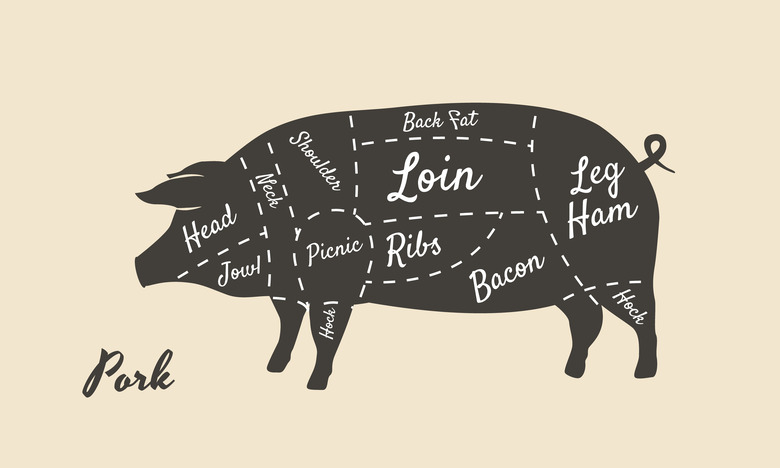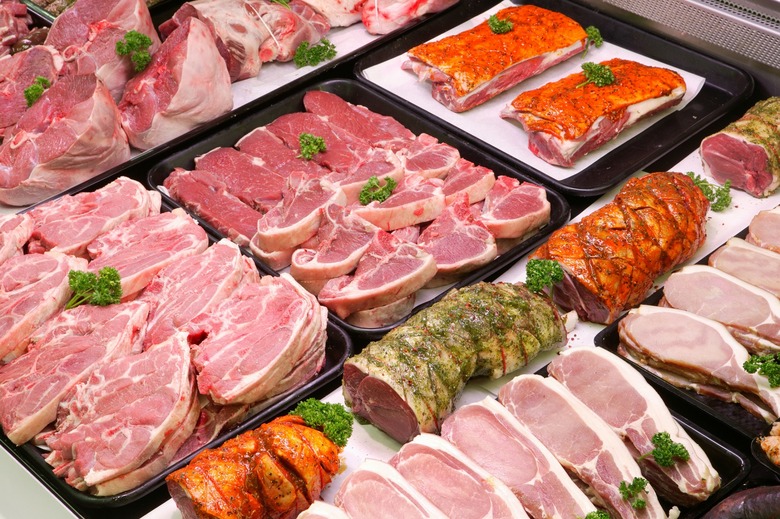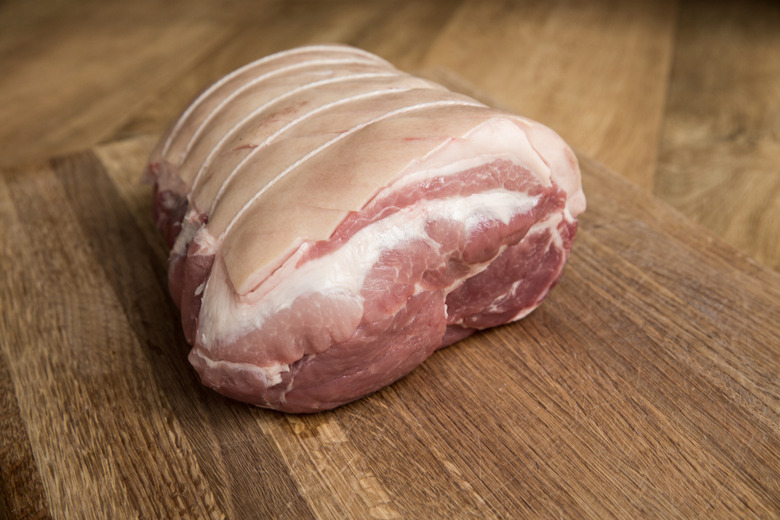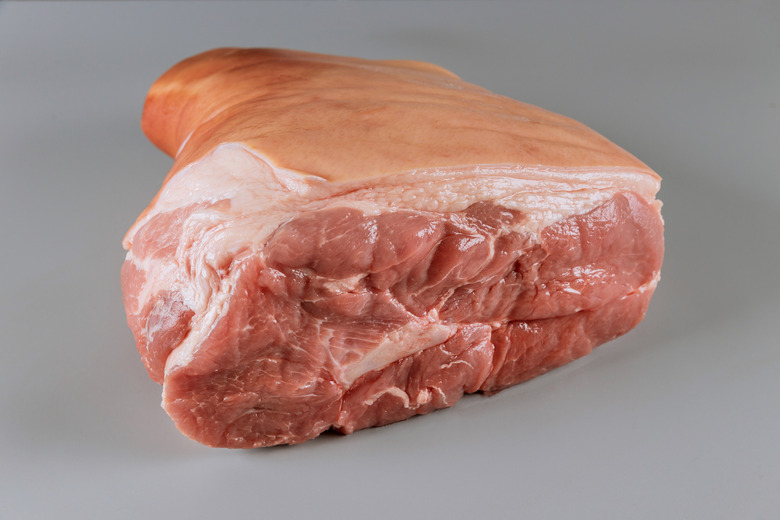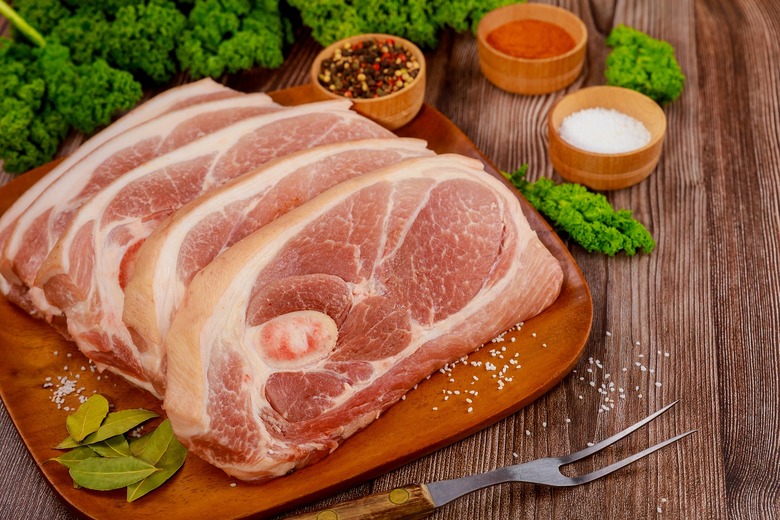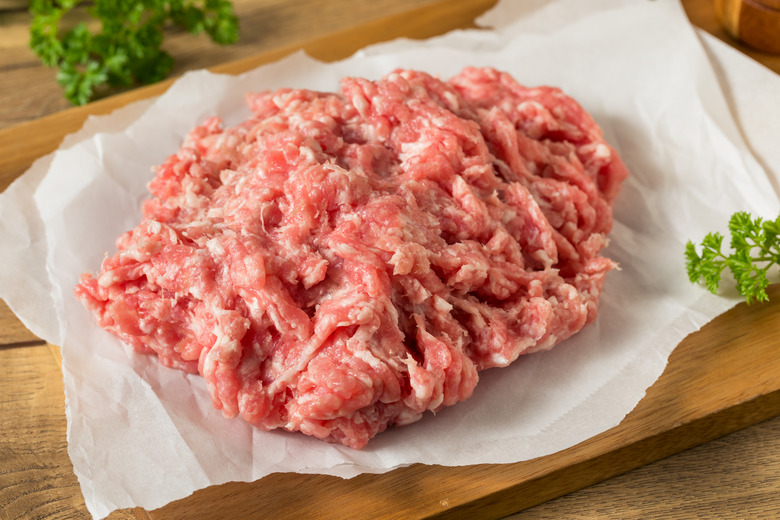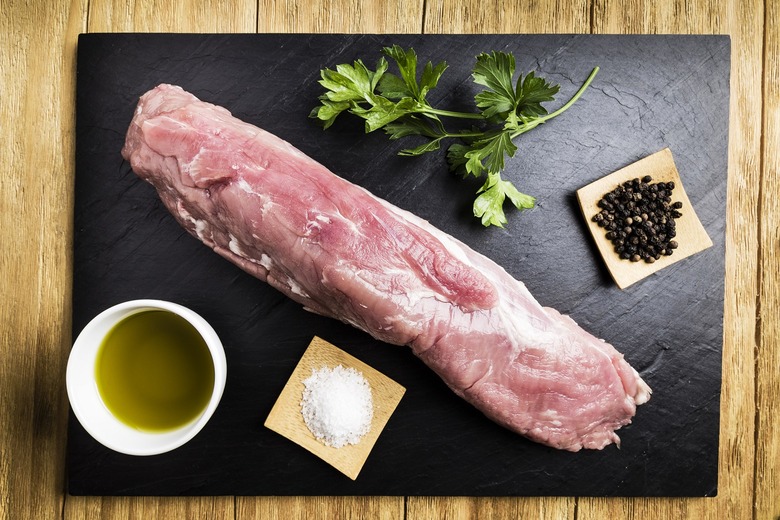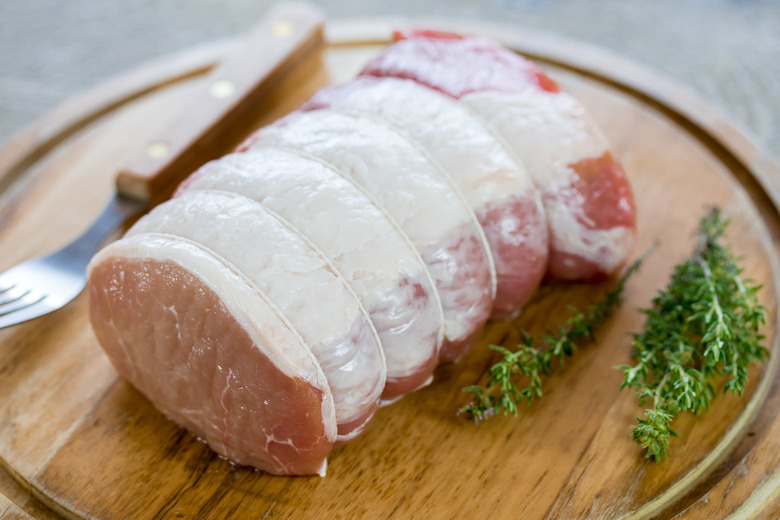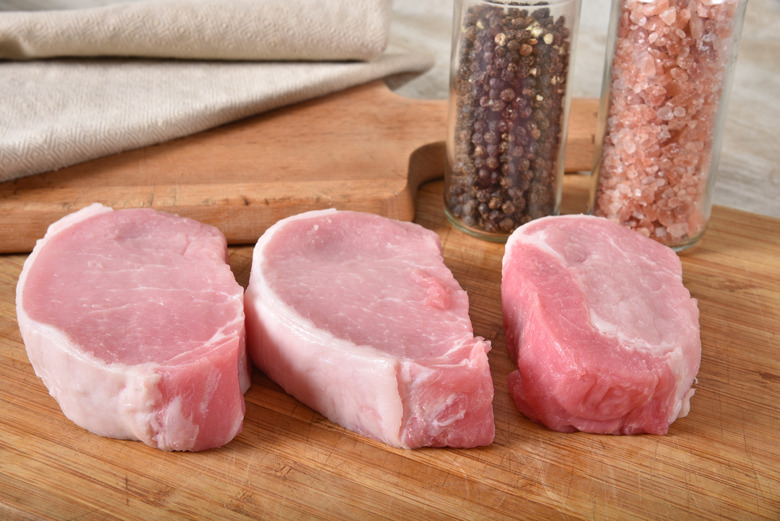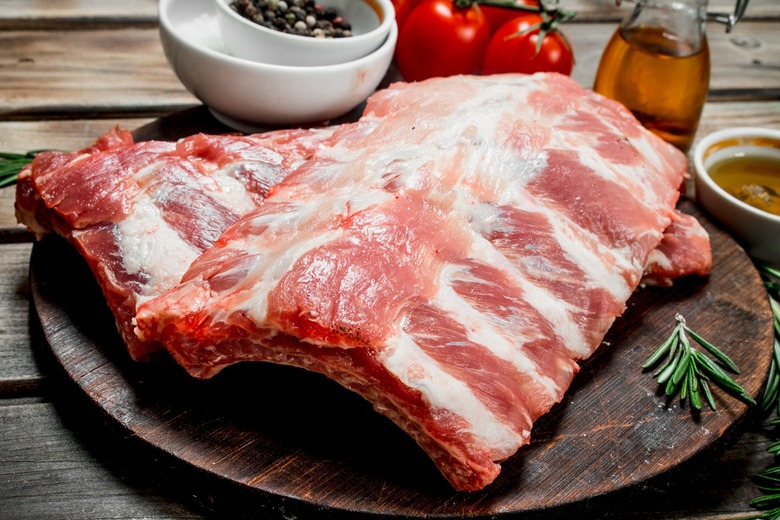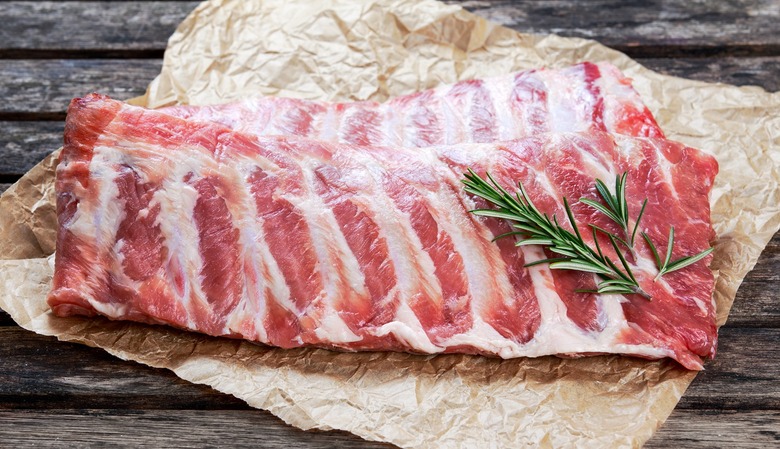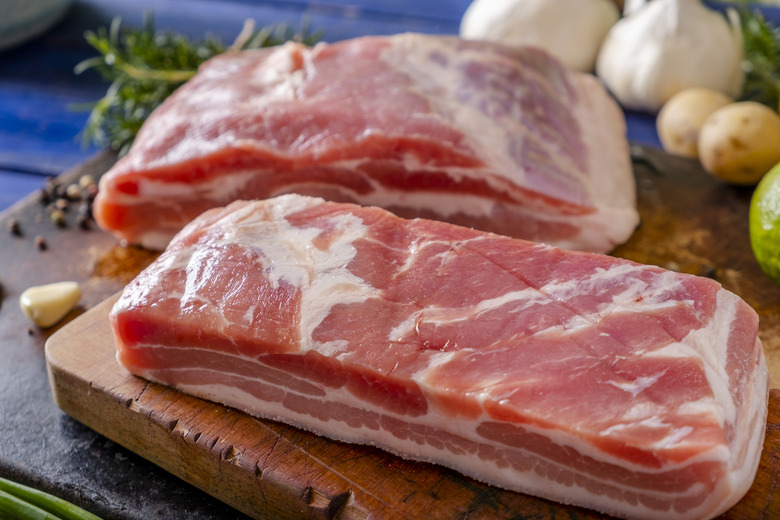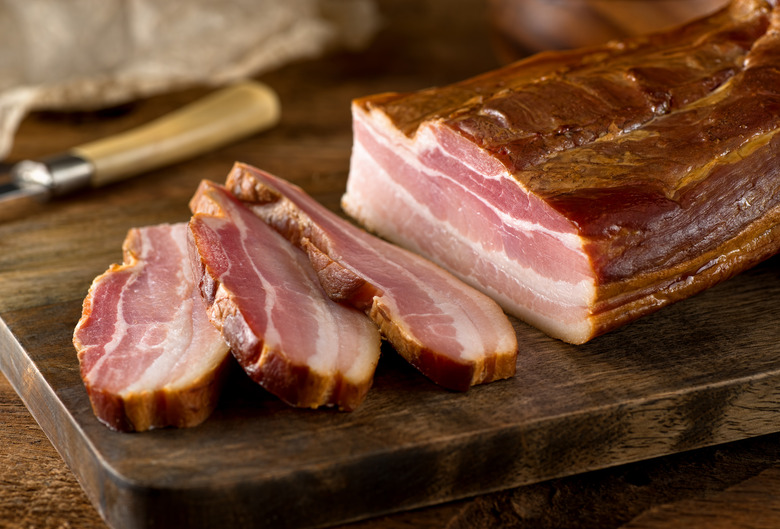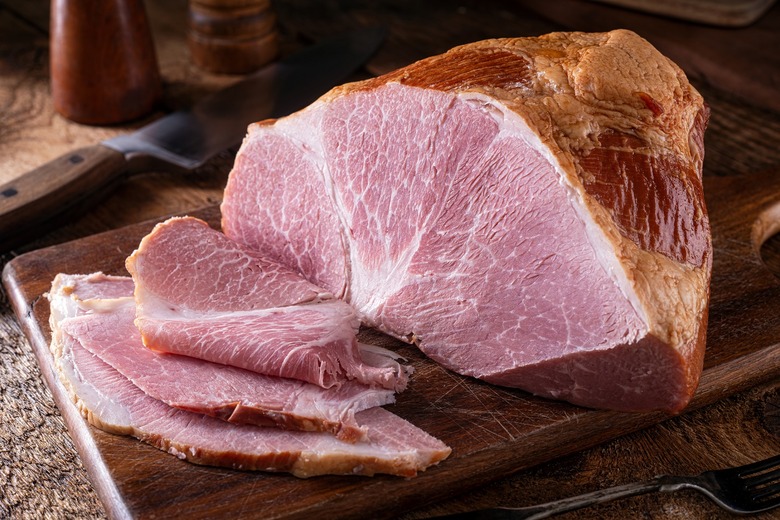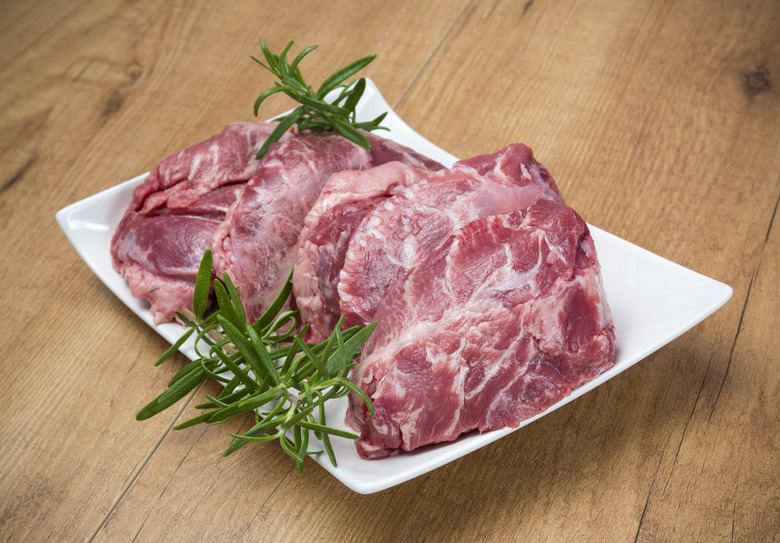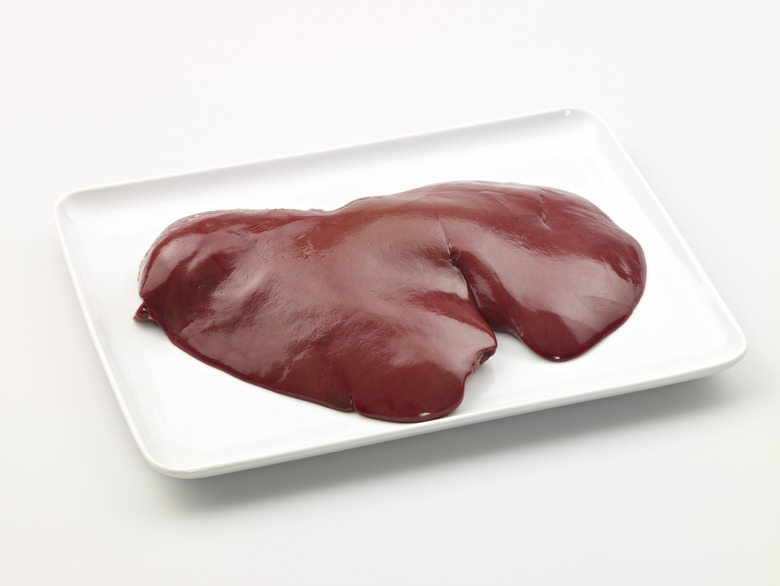Every Cut Of Pork You Need To Know
Pork is a seriously underrated protein, often relegated behind chicken and beef as the third option. But pork is just as delicious — if not more so — as these other meats. You just need to know what you're buying — and what to do with it.
To break down the pig, we spoke with Camas Davis, a butcher and author who founded The Good Meat Project, a Portland-based collective that promotes a "conscientious culture of meat consumption." The Good Meat Project also recently launched The Good Meat Breakdown, which helps consumers find, buy and cook quality meat.
So, what makes pork so special? "The relationship of fat to meat, and it lends itself to so many preparations, especially charcuterie, curing and sausage, of course. It's the perfect ratio, typically, of meat to fat for all kinds of delicious dishes and charcuterie," Davis says.
Cuts of pork and their names will vary regionally and by butcher. Some butchers prefer to turn the belly into bacon, while others prefer pork belly or meatier ribs. But these are the main cuts of pork you need to know.
What to look for when buying pork
"We've been taught that pork is sort of the other white meat. In fact, really good quality pork that comes from a pig that's been allowed to move around in its lifetime and has a diversity of food actually can be almost like a red meat. I prefer the meat to have a rosier color, if not a redder color," Davis says, noting that the final shade of pork will depend on how the animal is raised and if it's allowed to roam freely and eat a varied diet.
Boston butt
Also known as pork butt, pork shoulder, pork collar and coppa, the Boston butt doesn't come from the rear of the pig but rather the shoulder. The butt is on top of the shoulder, and according to Davis, is one of the best parts of the pig. "It has that good combination of fat to meat. That is a muscle that typically, if the animal has been allowed to move around in its lifetime, is used consistently over the course of each day," she explains. "So it is a tougher cut but that doesn't mean that it tastes tough at the end of the day when you cook it. It just requires a slow roast or a braise." You can roast it on a low heat in your oven all day or add it to your slow cooker to make the New Year's Day classic pork and sauerkraut.
Picnic roast
"The picnic is going to be very similar to the Boston butt, but it's lower down on the shoulder. It's going to have a lot of smaller muscles and other pieces of fat," Davis says. "The picnic is going to be a little lumpier, pulled-pork-style roast. It's not like a sliceable roast." Like the Boston butt, cook this low and slow for carnitas or BBQ pulled pork.
Pork steak
Another cut from the shoulder of the pig is pork steak, sometimes called pork blade steak. But unlike its tough shoulder counterparts, pork steak is cooked quickly over high heat, similar to how you might cook a beef steak. This cut is particularly popular in Missouri and can be found more frequently at backyard barbecues than restaurants, though it does make menu appearances as well.
Ground pork
Ground pork traditionally comes from the pork shoulder since it has an 80-20 meat-to-fat ratio but it can also come from old sows, according to Davis. Ground pork can be used for sausage along with seasonings and sausage casings, which come from pig intestines. Ground pork is also great for wonton filling, meatballs, burgers and the all-American classic, meatloaf.
Pork tenderloin
Mild in flavor, the pork tenderloin is a long, lean cut of meat that comes from the muscle alongside the pig's backbone. This boneless piece of meat takes well to marinades and quick cooking over high heat, both of which can help prevent it from drying out. You can also butterfly the tenderloin to ensure that this cylinder-shaped cut cooks evenly.
Loin roast
Though similar in name, the pork loin roast is from a completely different part of the hog than the tenderloin. This cut is wider, has a fat cap and can either be bone-in or boneless. Like the tenderloin, it is mild in flavor due to its relatively lean nature. "They're not going to have a lot of fat in between the muscle or in the muscle, and they're not going to have the connective tissues," Davis says. It does well on the grill, but you can also brine it — to seal in moisture — and roast it in the oven for a special holiday meal.
Pork chops
"Pork chops tend to come from the loin or the sirloin, which is that long muscle along the back of the pig," Davis says. Depending on your butcher or the exact cut of chop, these can be bone-in or boneless. Pork chops are mild in flavor but popular for families. They do well pan-fried, pan-roasted, broiled and are especially delicious grilled.
Baby back ribs
"The ribs are going to have more shoulder-like muscles. They'll have more flavor, more fat. Those are typically going to be a low and slow cooking technique," Davis explains. That's why you'll see ribs smoked or grilled over indirect heat for a long period of time. If you want to have the best ribs ever, you can also apply a rub and cook them at 275 for three to four hours before searing them on the grill for a bit of char.
Spare ribs
What's the difference between baby back and spare ribs? Baby back ribs are closer to the loin end of the pig, while spare ribs are closer to the belly and at the end of the lung. "If you imagine your own lungs, the bottom part would be the spare ribs," Davis notes. Also, sometimes cut into St. Louis-style ribs, these also do well low and slow in the oven and can be finished with a lip-smacking sticky sauce.
Pork belly
"Depending on where you're buying your meat from, the decision has to come down to 'do I want more meat on my ribs or do I want more meat on the belly for bacon?'" Pork belly comes, unsurprisingly, from the belly of the pig. It's cut from the very same part of the pig that produces bacon, though it is not cured, smoked or sliced. Pork belly is best when barbecued or braised; smoke it on the grill, like in this pork belly recipe or try it in the slow cooker, like this ginger-soy pork belly recipe instructs.
Bacon
"Pork belly is going to be braised, maybe with the skin left on and crisped up, versus bacon which is cured and salted and then allowed to sit in that cure and smoked essentially," Davis says. You know this breakfast staple, which is phenomenally fatty and crispy when cooked in a skillet and paired with eggs. You can also cook bacon in an air fryer for a stove-free method. Bacon also can be cut thick, and when sold as slab bacon, it's great braised and transformed into a tartine. The Italian version of bacon, pancetta, is the traditional ingredient in spaghetti carbonara and is also great on pizza.
Ham
Ham comes from the pig's rear and is best known in its cured state, when it's served on holiday tables. "Ham is ham, essentially. It's great for ham, it's great for making prosciutto if you're really bold. There are about five main muscles in there, each called rounds; each of those is slightly different. Some can be cut very thinly to have pounded cutlets for pork katsu or schnitzel," Davis explains. "It's going to be a tougher muscle so unless it's tenderized or brined or pounded, it's going to need slow and low treatment or you're going to cure it." As Davis points out, the ham is also used for charcuterie-style cured meats like prosciutto, Jamon Serrano and the pricey Jamon Iberico.
Head meat
There are four quarters of the primal area of the pig, and then there's everything else, such as the head, tail, trotters and organ meat. "The head is the best part of the animal, actually. The jowls, typically, are cured and made into a kind of a gel bacon that some people like, some people don't. It's a very different kind of fat than bacon has," Davis explains. "The head in general has little pieces of delicious roasting, braising meat that's great in soups, stews and pozole. The head is a little intimidating to the average cook but fun to cook." You may also see pig ears, which are both crunchy and glutinous, often featured in soul food cooking.
Organ meat
Pig liver and heart are the two most commonly found types of offal, according to Davis. When it comes to this organ meat — which also includes lung and liver — Davis recommends using it to add new layers of flavor to everyday dinner dishes, like meatloaf and Bolognese. "The typical one is to throw into a pate or even a little into a meatloaf if you like that sort of livery flavor. You can take a little bit of it and throw it into Bolognese for extra dimension," she says. "The heart is also delicious; it's just a stewing muscle. I'll cut it up and throw it into stew and chili."
More from The Daily Meal:
Every Cut of Steak You Need to Know
How Long Meat And Other Foods Last in the Fridge and Freezer
